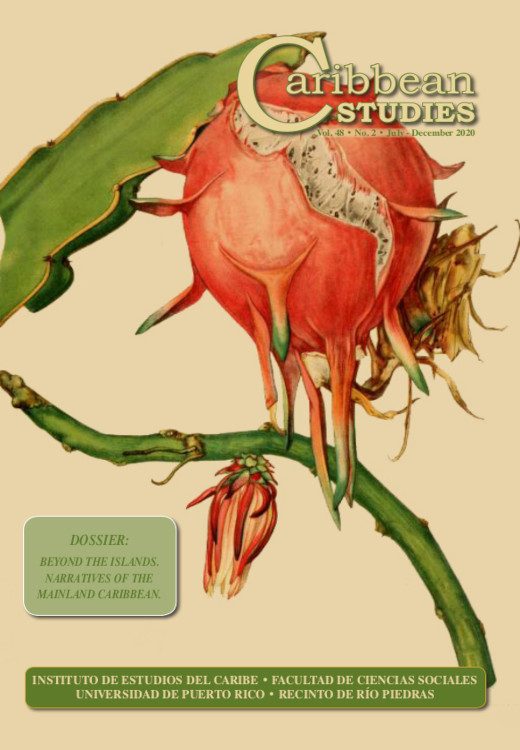Abstract
By tracing the long history of music in the Caribbean, this article will discuss the son jarocho as a sound of dissent: a musical, poetic and kinetic practice that relies on hundreds of years of sustained and intimate contact throughout the insular, coastal and mainland Caribbean, or the “Mexican Archipelago.” By examining specific sones, such as “El chuchumbé” and “El presidente,” I will explore the longevity and multivalence of this musical, poetic, and dance practice that has been appropriated as a sound of dissent and recuperation of rural communal values described as “convivencia” by practitioners both in Sotavento and abroad. The values of “convivencia,” or “coexistence” have been deployed across cities in the U.S. (and Europe) as a counterhegemonic force that seeks to imagine—and forge—vital human connections through music and specifically the fandango. It is, conversely, the idea of the rural communal values proper to indigenous democracy, and the history of Afro-Andalusian dissent throughout the colonial period and across the diverse port cities of the Mexican archipelago that are summoned to countermand urban decay, immigration policies, and the imposition of a global Western sameness.
References
Alcántara López, Á. 2015. Dijera mi boca: Textualidades sonoras de un Sotavento imaginado. México: Haciendo Comunidad Ediciones y de Programa de Desarrollo Cultural del Sotavento.
Arce, B.C. 2018. “El chuchumbé te va a agarrar: la pedagogía del son en la comunidad chicana,” in G. Pulido Llano and R. Chica Geliz, eds. Sensibilidades negras y mulatas en las narrativas audiovisuales del siglo XX: Colombia, Cuba, México y Panamá.
Cartagena: Universidad de Cartagena. . 2017. México’s Nobodies: The Cultural Legacy of the Soldadera and AfroMexican Women. Albany: State University of New York Press.
Arcos, B. 2011. “A Musical Style That Unites Mexican-Americans.” NPR Music, Weekend Edition, 28 October 2011. Accessed: March 18, 2016. Available at: <https://www.npr.org/2011/10/29/141723031/a-musical-style-that-unitesmexican-americans>. Ayer, hoy y mañana. Música tradicional de cuerdas. 2013. Son Altepee y ManoVuelta Films, Mexico.
Balcomb, H.E.A. 2012. “Jaraneros and Jarochas: The Meanings of Fandangos and Son Jarocho in Immigrant and Diasporic Performance.” Doctoral Thesis, University of California, Riverside. Cardona, I., and C. Rinaudo. 2017. “Son jarocho entre México y Estados Unidos: definición ‘afro’ de una práctica transnacional.” Desacatos, (53):20-37. Díaz-Sánchez, M., and A.D. Hernández. 2013. “The Son Jarocho as AfroMexican Resistance Music.” Journal of Pan African Studies 6(1):187-209. Fandango: Searching for the White Monkey. 2006. Dir. Ricardo Braojos. Mexican Arts Center, Rústicas Producciones de Bramao Films. Figueroa Hernández, R. 2014. “El son jarocho en los Estados Unidos de América: Globalizaciones, migraciones e identidades.”
Doctoral Thesis, Instituto de Investigaciones Histórico-sociales, Xalapa, Veracruz, University of Veracruz. . 2002. “Rumberos y jarochos,” in B. García Díaz and S. Guerra Vilaboy, eds. La Habana Veracruz/ Veracruz/La Habana. Veracruz: Universidad Veracruzana and Habana: Universidad de La Habana, pp. 383-400. Fulani, I. 2012. Archipelagos of Sound: Transnational Caribbeantities, Women and Music. Jamaica: University of West Indies Press. García Díaz, B. 2016. Tlacotalpan y el renacimiento del son jarocho en el Sotavento. México: Universidad Veracruzana. García de León Griego, A. 2002. El mar de los deseos: el Caribe Hispano musical.

